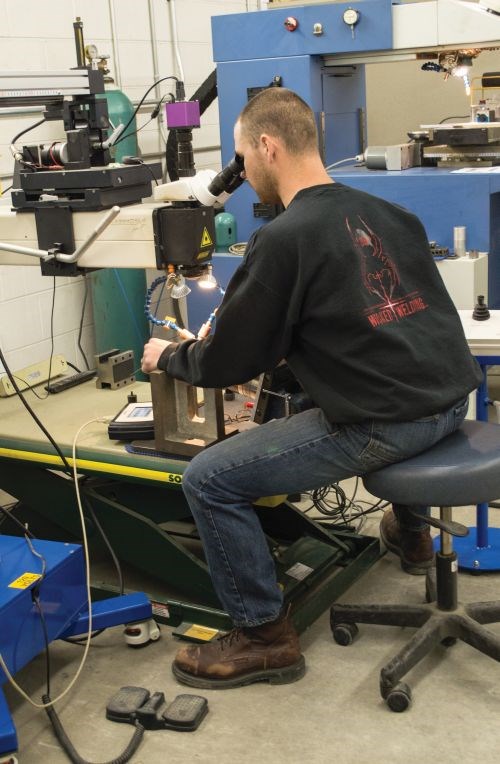The Right Welder for the Job
For this shop, determining which welder is best for any given job goes beyond choosing between laser and micro-TIG. The configuration of the machine matters, too.


Nick Garmin of Wicked Welding operates the 7700 Series laser welder. (Images courtesy of Aliwholihan photography.)
Not all equipment is created equal, even when you’re dealing with the same essential type of technology. Just ask Pete Mourouzis, owner of Dayton, Ohio-based Wicked Welding, which specializes in laser and Micro-TIG. Even when a job obviously lends itself to laser welding, he says the shop benefits from having more than one machine configuration available.
In the picture above, Mourouzis is operating the first laser the shop ever purchased: a 1900 Series machine from LaserStar Technologies. This model requires manipulating parts within the workzone by hand. Machines the shop would purchase in later years, such as the LaserStar 7700 Series shown above, are less labor intensive and more precise, he says. That’s largely because joystick controls, rotary fixture accessories and other such systems mean the quality of the weld isn’t solely dependent on the skill of the operator.

Pete Mourouzis operates the shop's original 1900 Series machine.
However, the original 1900 Series machine does have its advantages. “If we had gone with a larger, more automated machine from the outset, we’d have missed out on some major time savings,” Mourouzis says. “There’s no setup, so smaller jobs might only take a few minutes. Sometimes it’s easier to manipulate a part by hand than having to do some kind of setup.”
For more on Wicked Welding’s experience with laser technology, read this May-issue case study.
Related Content
-
How to Foster Innovation Through a Culture of Education, Mentoring
Dynamic Tool Corp. shares its strategy for building a team with the right attitude and aptitude to deliver innovation that meets customer expectations.
-
Leading Mold Manufacturers Share Best Practices for Improving Efficiency
Precise Tooling Solutions, X-Cell Tool and Mold, M&M Tool and Mold, Ameritech Die & Mold, and Cavalier Tool & Manufacturing, sit down for a fast-paced Q&A focused on strategies for improving efficiencies across their operations.
-
MMT Chats: California Mold Builder Discusses the Difficulties with Silicone Molding and the Power of the Magic 8 Ball
MoldMaking Technology Editorial Director Christina Fuges sits down with M.R. Mold President and Owner, Rick Finnie, to discuss how he began his moldmaking career, M.R. Mold's LSR Education, and the struggles of working with silicone. This episode is brought to you by ISCAR with New Ideas for Machining Intelligently.













